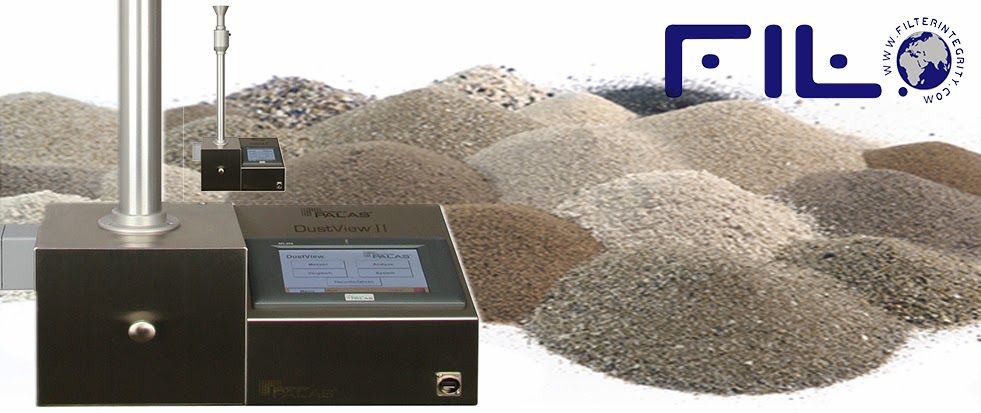
Dust in bulk materials can have several and varied impacts on users and producers.
Impacts on the producer include:
Cost to the user include:
So how exactly do you measure the dustiness of a bulk material ?
I’ve seen methods used, for example with desiccant materials, where a QC operative assessment is to plunge an arm into the bulk container, remove it from the bulk and assess the amount of dust caught on the hairs of the arm …… the ‘Hairy Arm’ test.
At FIL, we now offer an instrument DustView II which uses a ‘drop test’ for the bulk being investigated. Originally developed in conjunction with a major manufacturer of fertilisers, a measured weight of material is placed in a small hopper and a valve opened rapidly to allow the material to drop down a tube, under gravity, impacting on a baseplate mounted inside a chamber below. This chamber is monitored by an optics based dust monitoring system which fives an output based on obscuration / scattering of a light beam. The level of scattering is dependent on the dust concentration released during the fall and impact of the process.
Other methods exist and although it is difficult to correlate different systems or link any measured values to explosability limits etc., as an indicator of dust levels and a quality control tool it has proved to be a quick and useful instrument for both manufacturers and users.

On 18 October 2011 the EU Commission adopted the Recommendation on the definition of a nanomaterial. According to this recommendation a “Nanomaterial” means: A natural, incidental or manufactured material containing particles, in an unbound state or as an aggregate or as an agglomerate and where, for 50 % or more of the particles in the number […]
I attended the Cambridge Particles meeting for the first time, held in the Engineering Department of Cambridge University on Friday 13th May 2011. I didn’t know what to expect, but the meeting had a friendly academic atmosphere, with scientists and technicians present having a range of interests in aerosol science, although as exhibited by the […]
Just got back from attending the Aerosols in the Environment technical meeting at the Institute of Physics in London. This was a joint meeting with the IOP Environmental Group and the Aerosol Society and was well attended by 35 people from a range of academia, meteorological groups and aerosol characterisation instrument suppliers. As some reading this may know, my […]
Well, back in the office after the Filtech 2011 show last week in the lovely city of Wiesbaden. It was an excellent three days with what has been reported as an increase in visitors again since the last show, coming from all over the world. It’s a long time since I’ve been stood on a stand and […]
Stay up to date with Filter Integrity Ltd